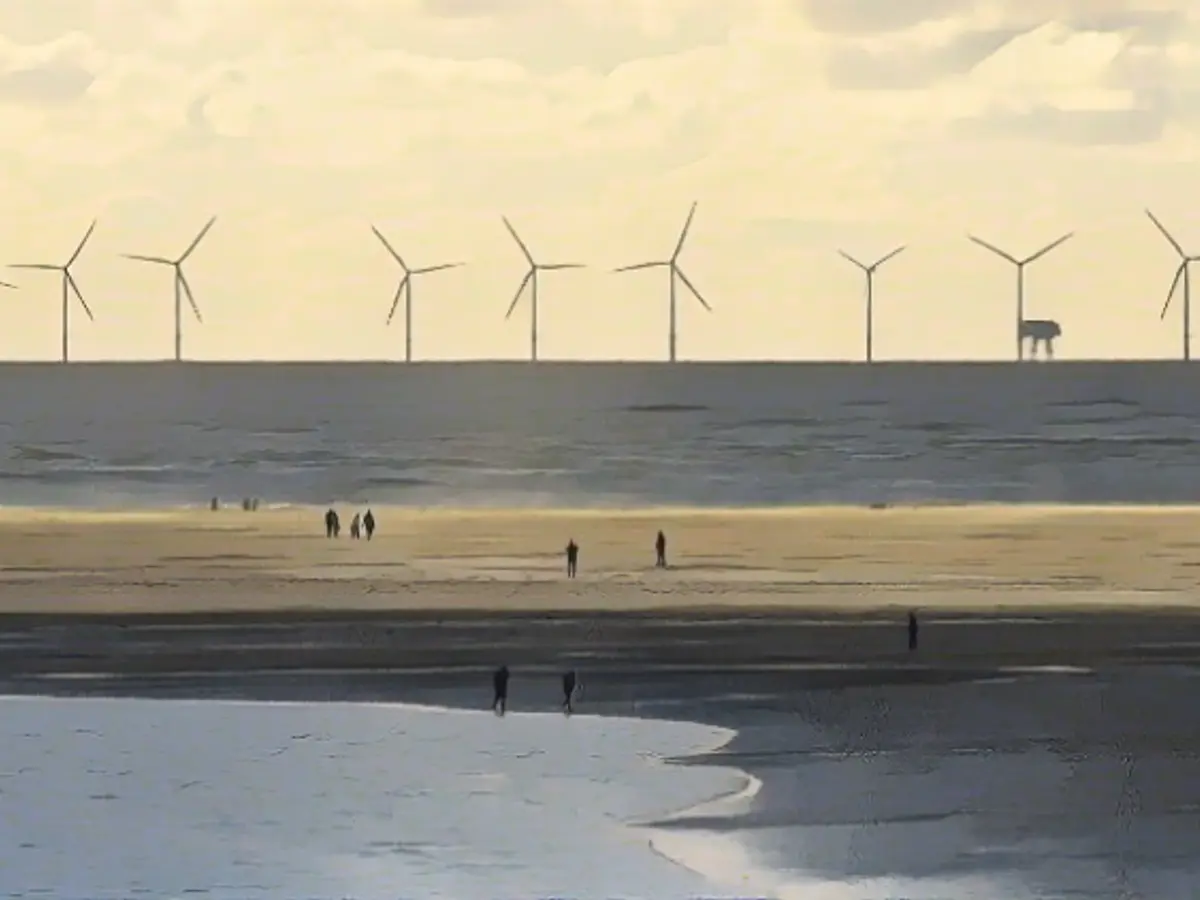Thousands of wind turbines needed at the height of the Eiffel Tower
Wind power is set to become the backbone of Germany's energy supply. But the road to achieving these ambitious goals is rocky. This is reflected in an analysis of offshore expansion, which sees the lack of port areas as the main problem.
According to the wind power industry, the planned expansion of offshore wind energy requires up to 200 hectares of additional heavy-duty space in German seaports. "This corresponds to the area of a parking lot with 260,000 cars or 270 soccer pitches," according to an analysis by the Offshore Wind Energy Foundation. "Investments in the billions will be needed in the coming years."
The demand is supported by the Renewable Energy Network Hamburg, the Wind Industry and Hydrogen Association WAB and the WindEnergy Network. "The seaports are the central hubs of offshore wind energy," said Karina Würtz, Managing Director of the foundation. "Whether as base ports for the construction and subsequent dismantling of wind farms, as service ports for operation and maintenance, as a storage location or as a production site - they perform a variety of functions in the offshore wind energy sector."
According to the German government, offshore wind power is to be expanded to a capacity of 30 gigawatts (GW) by 2030 and 70 GW by 2045. This corresponds to an expansion of 62 GW within the next 22 years and, according to industry figures, will require up to 7,000 new offshore wind turbines, "with 300 meters as high as the Eiffel Tower, 2,500 tons of heavy steel foundations, high-tech rotor blades over 100 meters long" and 20,000 tons of converter stations as hubs.
Back in the summer, Karina Würtz said in an interview with ntv.de: "Installing a capacity of 30 gigawatts by 2030 or at least 40 gigawatts by 2040 ... That will be difficult because we don't have enough port space. We have nowhere near enough handling areas and heavy-duty areas that would be able to absorb this expansion peak. Only a small amount of wind power will be added until 2028. A massive expansion is then planned for three years. After that, it will be scaled back again. No infrastructure can prepare for this curve. It's not worth it."
Difficult financing situation
The expansion of offshore wind power is also to be accelerated outside Germany. "The European competition for port areas that is becoming increasingly apparent due to the new pace of expansion and the difficult financing situation represent an incalculable risk for achieving the offshore wind expansion targets," says the Wind Energy Foundation.
"While the Dutch and Danish ports of Eemshaven and Esbjerg have focused strongly on the offshore wind sector in recent years and have also taken large market shares from the German ports, the latter have increasingly turned to other business areas." However, the capacities of foreign ports will probably no longer be sufficient to adequately support the German expansion from 2027.
Read also:
To meet Germany's goal of expanding offshore wind power to 30 GW by 2030, investments in port infrastructure are crucial. Without sufficient heavy-duty space in German seaports, the transition to offshore wind power could be hindered, as stated by Karina Würtz of the Offshore Wind Energy Foundation. This energy transition relies heavily on the deployment of offshore wind power, which requires a significant expansion of offshore wind farms, including up to 7,000 new wind turbines as tall as the Eiffel Tower.
Source: www.ntv.de








